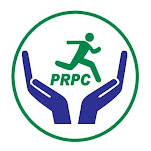
A stroke often causes weakness or complete paralysis on one side of the body. This happens opposite to the side of the brain affected, making it difficult to walk, lift an arm, or sit properly.


After a stroke, muscles may become abnormally tight or stiff, a condition known as spasticity. This limits movement and can lead to discomfort or pain in daily activities.
Depending on the area of the brain affected, a stroke may cause:
-
Paralysis or weakness (often on one side of the body)
-
Loss of balance and coordination
-
Muscle stiffness or spasticity
-
Fatigue and reduced endurance
-
Difficulty in walking or sitting
Physiotherapy targets these specific impairments to improve function and restore independence.
Physiotherapy typically begins within 24 to 48 hours of stabilization and continues for weeks or even months. Here's how physiotherapists help in stroke rehabilitation:
1. Mobility Training
Patients learn to sit up, stand, walk, and eventually climb stairs with proper balance and safety.
2. Range of Motion Exercises
To reduce stiffness and maintain joint flexibility, therapists guide patients through gentle stretches and movement exercises.
3. Strengthening Exercises
Specific exercises are used to regain muscle strength in the affected limbs and core.
4. Balance & Coordination Therapy
Activities like standing on one leg, walking on uneven surfaces, or using balance boards improve stability.
5. Functional Task Training
Therapists simulate real-life tasks (e.g., picking up a cup, buttoning a shirt) to help the brain and body re-learn everyday activities.
6. Gait Training
If walking is impaired, therapists use parallel bars, walkers, or treadmills to retrain proper gait patterns.
 Techniques and Tools Used in Stroke Physiotherapy
Techniques and Tools Used in Stroke Physiotherapy
Mirror Therapy
Encourages brain activity by using the reflection of the unaffected limb.-
Electrical Stimulation
Stimulates weak muscles to contract and build strength. -
Robotic-Assisted Therapy
Used in advanced clinics to guide limb movements and track progress. -
Constraint-Induced Movement Therapy (CIMT)
Encourages use of the affected limb by restricting the unaffected one.
Recovery time varies depending on:
-
The severity of the stroke
-
The area of the brain affected
-
Age and overall health
-
Consistency of physiotherapy sessions
Some people improve significantly within weeks, while others may need ongoing support for months or years.
Rehabilitation is not just physical—it’s emotional too. Encouragement and involvement from family members can make a huge difference in motivation and long-term success.

